The HEPD-02 instrument is composed of specialized detectors for the identification of single charged particles and measurement of their energy and incoming direction, in particular electrons with kinetic energies between 3 and 100 MeV and protons from 30 to 200 MeV. Incoming particles from outer space enter the first trigger layer TR1 and cross the direction detector DIR, which reconstructs the incoming direction, then a second trigger layer TR2 and the calorimeter composed of a light section (RAN) and a heavy one (EN), where the particles release most of their energy. The containment detector, made of bottom (BOT) and lateral (LAT) layers, allows tagging of events not fully contained in the inner detectors.
The direction detector (DIR or briefly “tracker”) is based on the monolithic active pixel sensor (MAPS) technology developed for the ALICE experiment. It marks a significant milestone as the first-ever employment of a silicon pixel tracker in space-based applications. It includes a total of 150 Tower Semiconductor ALTAI MAPS (15 mm x 30 mm area) built with 180 nm CMOS process. The pixel size of 29 μm ∙ 27 μm allows for a single hit resolution of approximately 4 μm, with a noise rate as low as 10⁻¹⁰ fake hits/pixel/event.
The monolithic sensor includes the whole signal processing chain (hit detection, zero suppression and digital output) directly inside the active layer, with great advantage on the point of view of compactness.
The DIR is composed of 15 staves, each consisting of 10 ALTAI sensors arranged in two columns. A turret is formed by vertically stacking 3 staves and connecting them to the control and read-out electronics through a lateral splitter board. The overall tracker assembly is obtained by aligning 5 turrets side by side. Each tracker plane is characterized by a 150 mm × 150 mm total active area. The 3 planes of MAPS allow for a minimum measurement redundancy and direct monitoring of alignment and efficiency of single staves.
The other HEPD-02 detectors are made of scintillators, read-out at opposite ends or corners by photomultiplier tubes (PMTs) Hamamatsu R9880-210, characterized by high quantum efficiency and gain set in the range from 0.5 x 10⁶ to 3 x 10⁶, according to the light yield of each scintillator module. The PMT analog signals are managed by the trigger board, relying on Weeroc Citiroc 1A ASICs, ADCs and FPGA to generate digital samplings of the pulse amplitudes and trigger signals needed for starting and synchronizing HEPD-02 data acquisition. The trigger logics can be built up with different patterns of PMTs and selectable pre-scaling factors.
TR1 is segmented into 5 bars of dimensions 33 mm x 155 mm, made of Eljen EJ-200 plastic scintillator. To match the side area of a bar with the PMT active area, UV-transparent PMMA light guides are placed at both ends. TR1 is only 2 mm thick, in such a way to minimize the energy loss of low-energy particles.
TR2 is segmented into 4 bars of EJ-200 scintillator, 36 mm × 150 mm each, oriented perpendicularly with respect to those of TR1. The thickness of TR2 (8 mm) was defined to optimize the energy resolution obtained for minimum ionizing particles.
The calorimeter consists of two sections. The first one is a tower of twelve EJ-200 plastic scintillator layers, effective to assess the penetration range of lower energy particles and therefore collectively indicated as RAN (range sub-detector). The second one is composed of two layers of much heavier lutetium-yttrium oxyorthosilicate crystal (LYSO) scintillator bars, collectively indicated as EN (energy sub-detector).
Each RAN layer has dimensions 150 mm x 150 mm x 10 mm; it is read-out by two PMTs at opposite corners. For subsequent layers, the PMTs are positioned alternatively on different diagonals, thus sampling the energy release with an overall uniform sensitivity. The 12 layers are mechanically arranged in groups of 4.
Each EN layer is made of three LYSO bars, characterized by quite remarkable dimensions for a space experiment (150 mm x 49 mm x 25 mm). Each bar is read-out by two PMTs placed at opposite ends; the bars of the two layers are mutually orthogonal.
The payload Al-alloy container box is composed of a base plate for mechanical and conductive thermal coupling with the satellite and of 5 panels, externally treated with conductive black coating. The lateral panel adjacent to TR1 includes a rectangular hole where a thin particle entrance window made of copper-clad polyimide layer is installed, in such a way to minimize the amount of material crossed by particles before reaching the instrument.
In compliance with the mission requirements, two identical HEPD-02 models were assembled in the clean rooms of INFN at Roma Tor Vergata (Italy): a Qualification Model (QM) and a Flight Model (FM, see the following figures) which has been subsequently integrated on satellite.
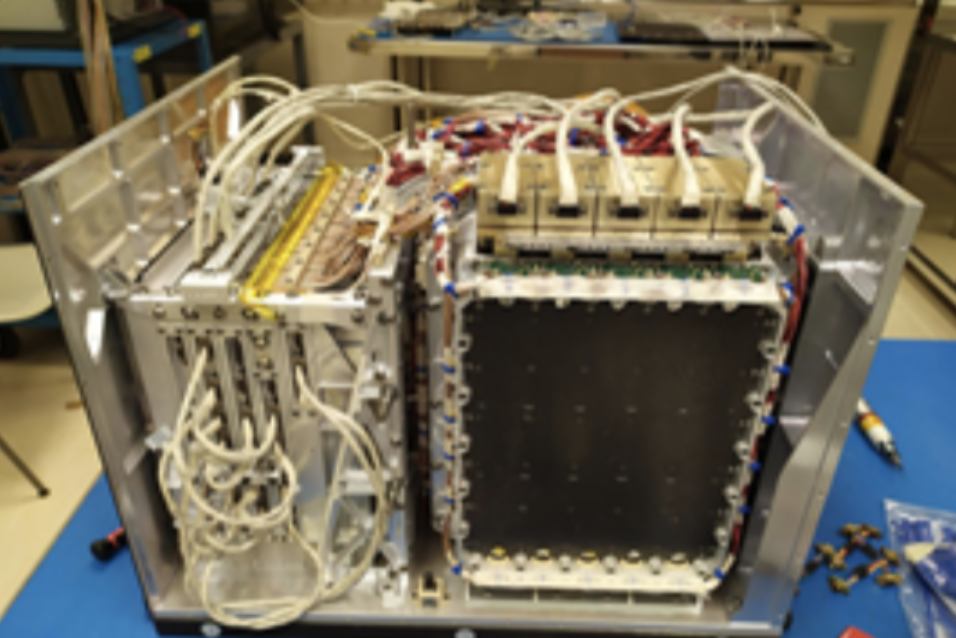
The assembled HEPD-02 Flight Model, with three external panels removed.
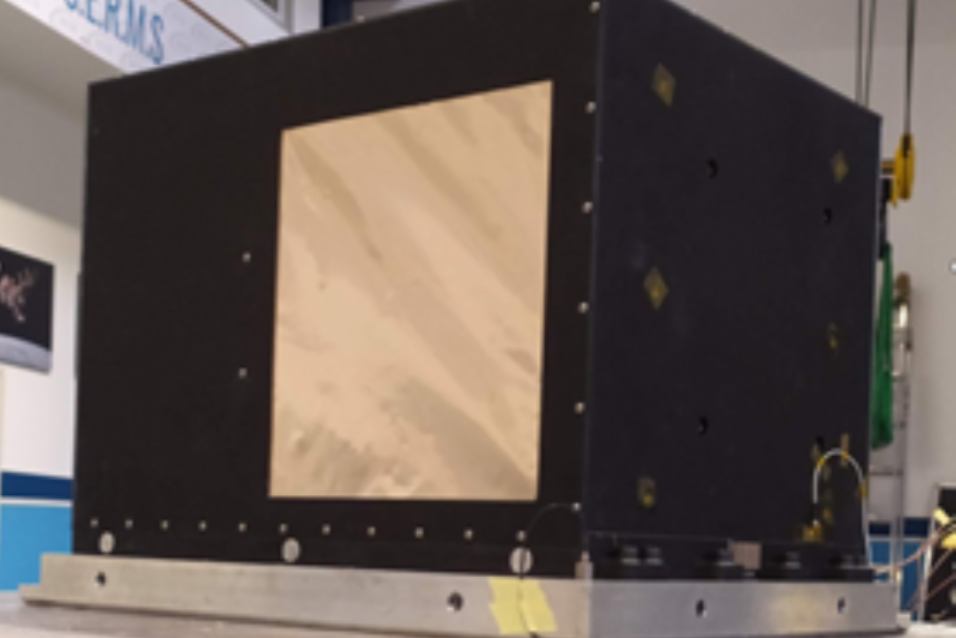
The assembled HEPD-02 Flight Model during vibration test.
Both QM and FM underwent successful qualification and acceptance campaigns, respectively, followed by instrument calibration.
The qualification campaign of HEPD-02 QM included mechanical and thermal over-stresses with respect to what reasonably expected during launch and operation phases, to fully assess the payload compliance with the space mission requirements. The qualification campaign was performed from December 2022 to February 2023 at the SERMS Laboratory in Terni (Italy) with a sequence of pyroshock, vibration, thermal cycling in air and vacuum.
The QM was exposed, along the three axes, to pyrotechnic shocks with frequency composition in the range 100 – 4000 Hz and acceleration up to 1000 G, followed by vibrations with sinusoidal stimulus (10 – 100 Hz, intensity up to 12 G) and random loading (10 – 2000 Hz, with overall RMS value of 11.3 G). The QM was then extensively tested in a climatic chamber at ambient pressure: 25.5 temperature cycles were performed between
-30° C and +50° C, hence in a much broader temperature range than specified in the operational requirements (−10°C and +35°C). After that, 6.5 temperature cycles were performed in a thermal-vacuum chamber with the same temperature range, at a pressure < 6.65 x 10⁻³ Pa.
The mechanical and thermal acceptance campaign of FM was similarly performed from February to July 2023 at the same facility, without pyroshock and with less demanding mechanical and thermal conditions for the other tests. This was followed by an extensive electromagnetic compatibility (EMC) campaign, performed in the anechoic chamber at the Institute of Applied Physics ”Nello Carrara” (IFAC) of the National Research Council (CNR).
No structural damages, EMC incompatibility, loss of functionality or scientific performance degradation were observed during or after the instrument qualification and acceptance campaigns. Therefore, in December 2023 the HEPD-02 FM was shipped to DFH Satellite Co., Ltd. in Beijing (China) for satellite integration.
In the following table the complete list of the Italian facilities used in the calibration campaign of HEPD-02 during 2022 and 2023. Additional information about particle types, and energy ranges used in the tests are given.
| Facility name | Particle type(s) | Energy ranges |
|---|---|---|
| LINAC of Santa Chiara Hospital, Trento | low-energy electrons | 6, 9, 12 MeV |
| LINAC of Santa Chiara Hospital, Trento | gamma photons | up to 12 MeV |
| APSS Protontherapy center, Trento | protons | 30-200 MeV |
| Beam Test Facility, Frascati | electrons | 30-450 MeV |
| CNAO, Pavia | carbon nuclei | 115 - 398 MeV/amu |
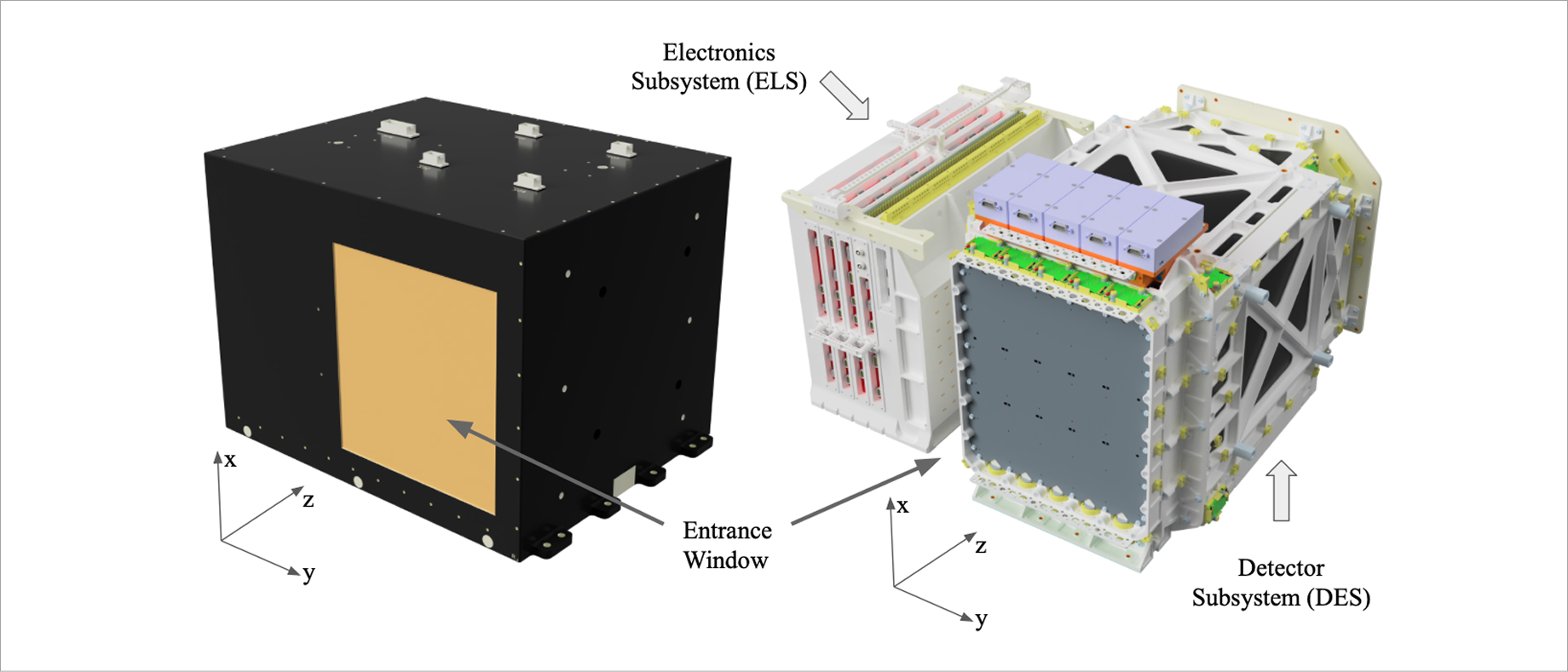
In January 2024, after completing standalone integrity verifications and magnetic cleanliness measurements, the HEPD-02 was installed on board CSES-02 and the compatibility of the electrical and data interfaces with the satellite was verified; in February 2024 a full functional test campaign covering calibration, reconfiguration and acquisition runs was performed, followed in March 2024 by EMC and orbital maneuver tests conducted at the satellite level.
Between April and October 2024, the assembled CSES-02 satellite underwent a vibration test campaign, including both sinusoidal and random stimuli, a thermal balance test (two days) followed by 4 thermal-vacuum cycles (four days), a magnetic cleanliness test, an aging test with continuous operation for 5 days, a final functional verification including the telecommand sequences intended for use during health check phase immediately after first power-on in orbit.
No anomalies were found during the test campaign at DFH. Therefore in November 2024, CSES-02 was transferred to the Jiuquan Satellite Launch Center (JSLC) in Gansu, Inner Mongolia, China. In December 2024, the procedures performed during the factory health check were repeated on HEPD-02 as a final test and verification before the launch of CSES-02.
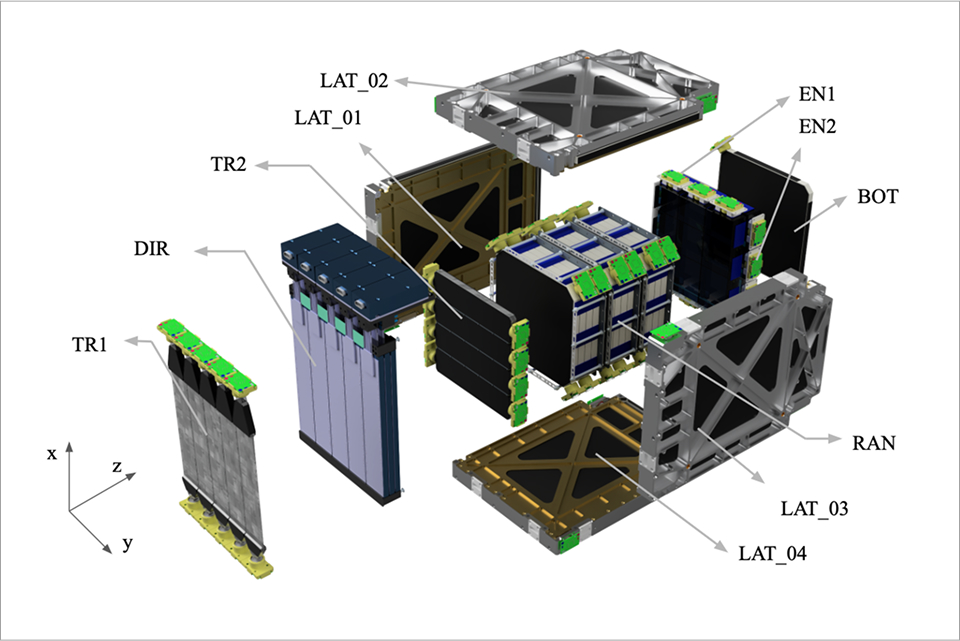
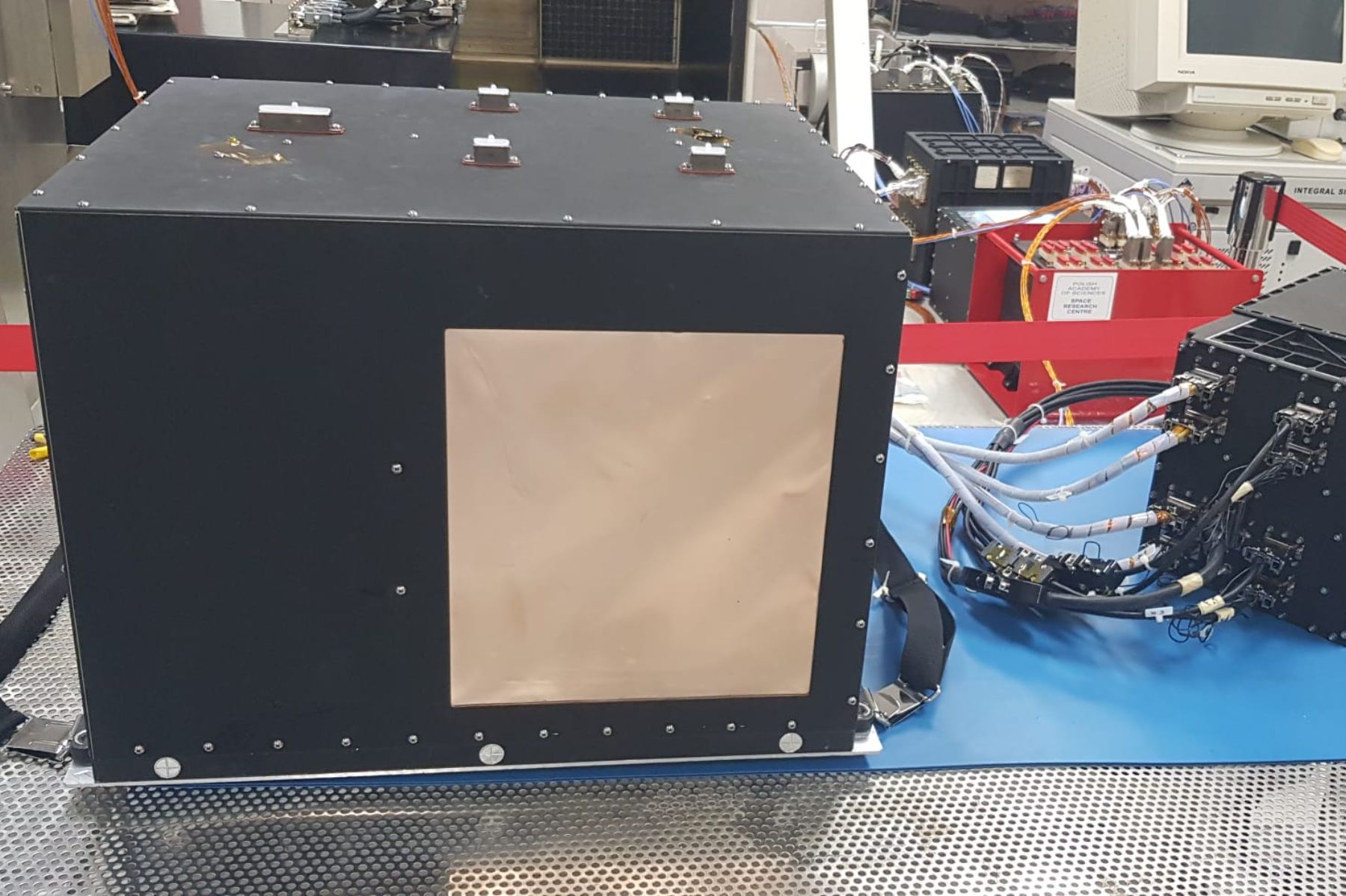
in depth
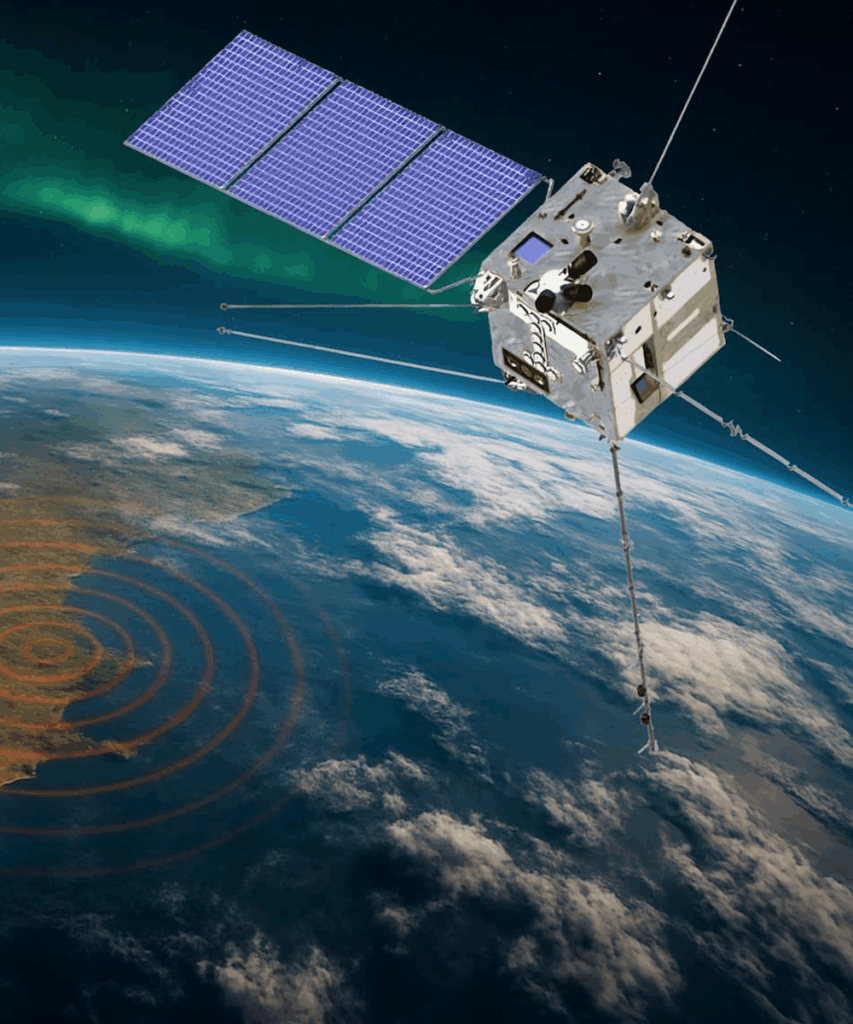
CSES-02 satellite is based on the Chinese CAST2000 platform. It has a mass of 900 kg...
Read more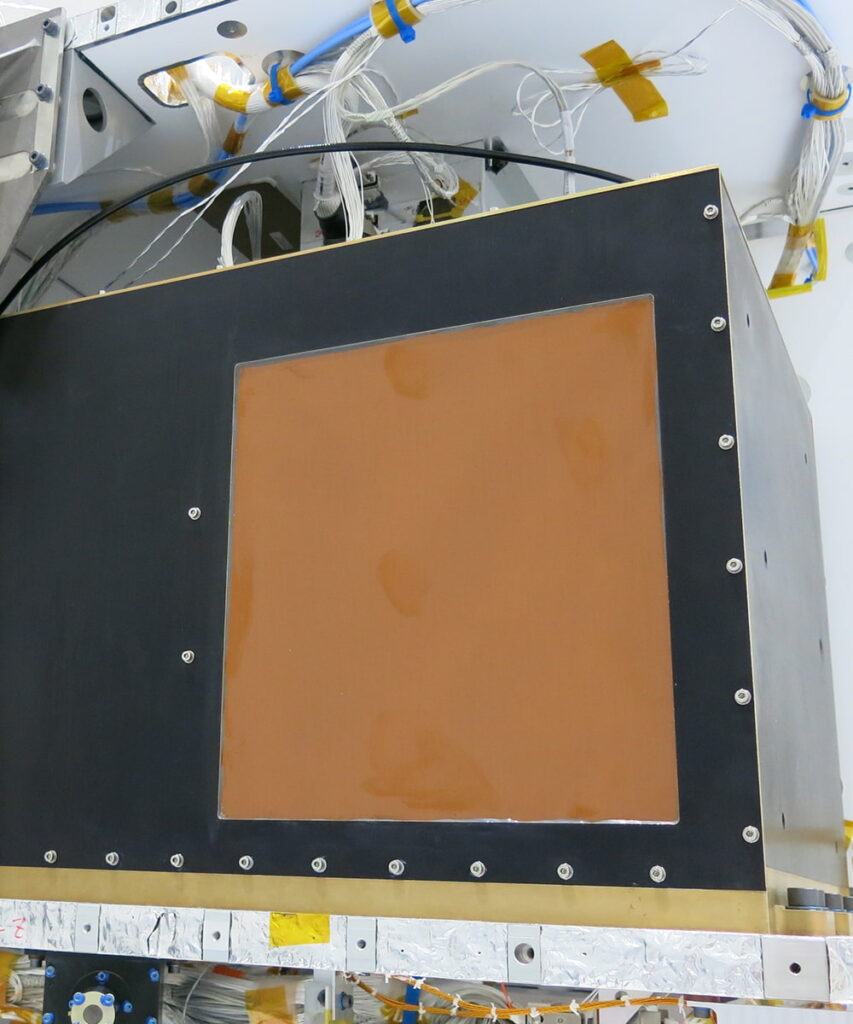
HEPD-02 has been designed to meet the demanding tasks of an excellent particle detector in...
Read more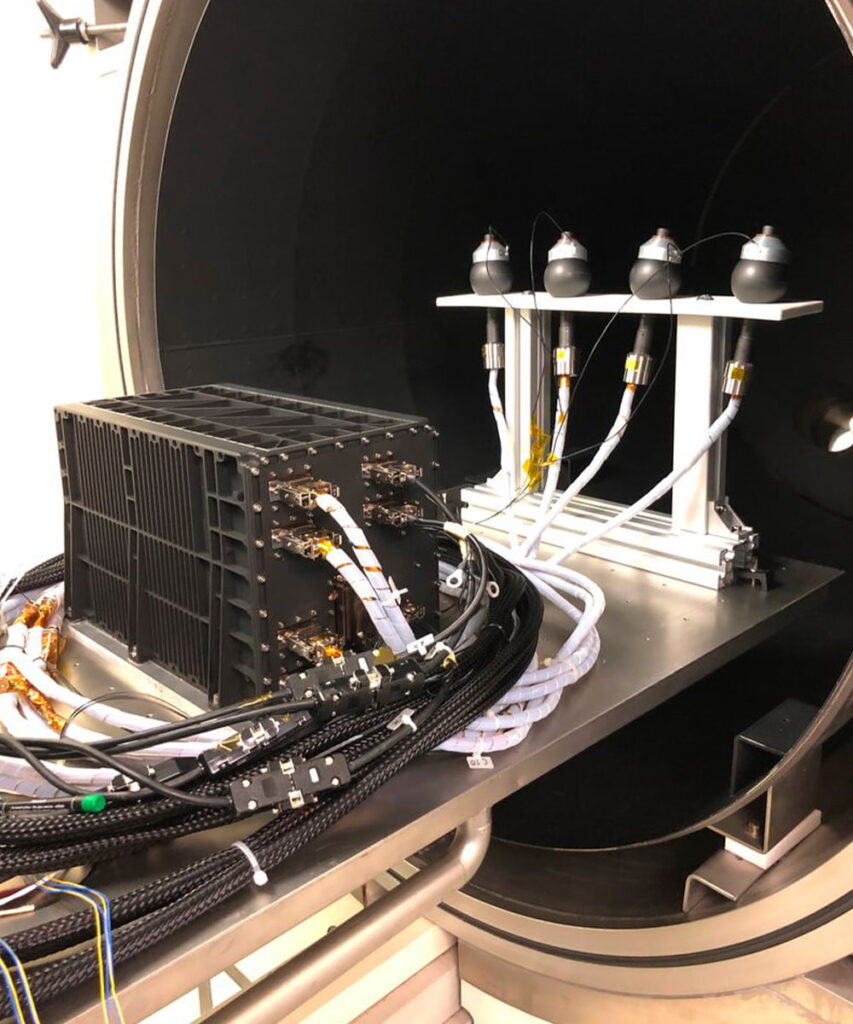
The EFD-02 (Electric Field Detector) allows us to measure the electric field components in a...
Read more
Read more